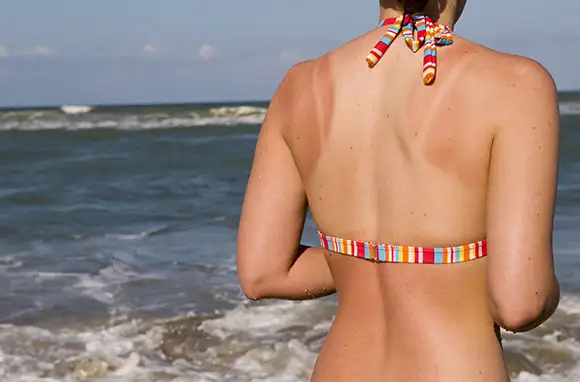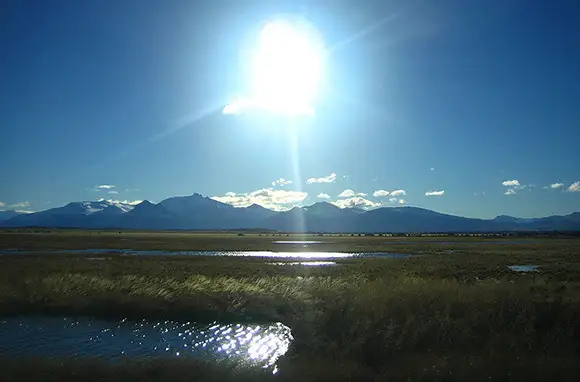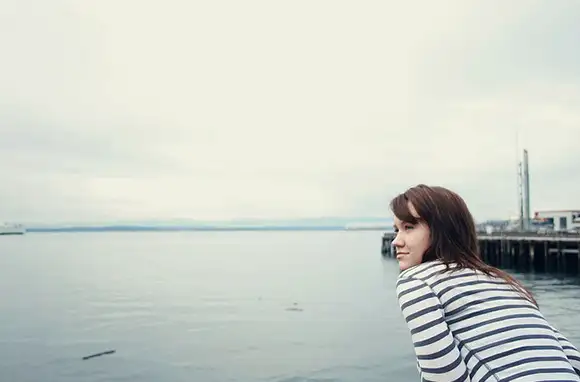
Sun can make or break a vacation. Too little and you may as well stay home. Too much and you end up splotchy and peeling for weeks. In fact, sunburns are on the rise in the U.S. At first glance, that may seem like nothing more than a reason to break out the aloe vera gel. But it’s a trend that has doctors concerned, since even one bad burn can double a person’s risk of developing melanoma.
Proper protection is key whenever you’re outside, but sunburns have a particular way of inviting themselves along on vacation. Factors like altitude, latitude, and the reflective nature of snow, sand, and water can turn a mild burn into a serious case of lobster skin. Here are 10 destinations where you’ll need to take extra care, and just as many ways to protect yourself from the sun’s harmful ultraviolet radiation.
Image Gallery

Destination: Hawaii
Risk: Beach
Sun and sand are the perfect couple, right? But beware: When you come between them, you're at high risk of getting burned. That's because sand reflects 25 percent of the sun's rays, giving unsuspecting beachgoers an extra dose of UV exposure. Hawaii is world famous for its beaches and notorious for its sunburns. Coincidence? No way.
Skin-Saving Advice: Wear sunscreen the right way. That means wearing a broad-spectrum sunscreen (one that blocks both UVA and UVB rays) of at least SPF 30. Use a minimum of one ounce (enough to fill a shot glass). According to the American Academy of Dermatology (AAD), most people only apply 25 to 50 percent of the recommended amount. The AAD suggests applying sunscreen to dry skin 15 minutes before going outdoors and reapplying every two hours, or after swimming or sweating. The Environmental Working Group's sunscreen guide tells you what to look for and what to avoid.

Destination: Hawaii
Risk: Beach
Sun and sand are the perfect couple, right? But beware: When you come between them, you're at high risk of getting burned. That's because sand reflects 25 percent of the sun's rays, giving unsuspecting beachgoers an extra dose of UV exposure. Hawaii is world famous for its beaches and notorious for its sunburns. Coincidence? No way.
Skin-Saving Advice: Wear sunscreen the right way. That means wearing a broad-spectrum sunscreen (one that blocks both UVA and UVB rays) of at least SPF 30. Use a minimum of one ounce (enough to fill a shot glass). According to the American Academy of Dermatology (AAD), most people only apply 25 to 50 percent of the recommended amount. The AAD suggests applying sunscreen to dry skin 15 minutes before going outdoors and reapplying every two hours, or after swimming or sweating. The Environmental Working Group's sunscreen guide tells you what to look for and what to avoid.

Destination: Australia
Risk: Ozone Hole
The Earth is 4.5 billion years old, so how does it maintain its fresh and vibrant complexion? Stratospheric ozone. The ozone layer acts as Earth's sunscreen, filtering harmful ultraviolet radiation from the sun. However, in areas where the ozone layer is compromised, more UV rays hit the Earth, which means more skin damage from sun exposure. With its proximity to the South Pole's seasonal "ozone hole," Australia is the skin cancer capital of the world. And permanent sun damage is a souvenir we can live without.
Skin-Saving Advice: Clothing protects against the sun's harmful rays. While all fabrics filter some ultraviolet radiation, a typical cotton T-shirt offers only minimal protection. However, clothing designed with sun safety in mind carries an Ultraviolet Protection Factor (UPF) rating ranging from 15 (good) to 50+ (excellent). Shirts, pants, and hats engineered to protect against UVA and UVB rays are particularly important for the sun-sensitive, children, and travelers in destinations where the sun is strongest. REI's website has a useful primer on UPF clothing.

Destination: Colorado
Risk: High Altitude
Like any doting parent, we're sure Daedalus told Icarus to wear his sunscreen, since skin burns more quickly at high elevations. Ultraviolet exposure increases somewhere between 4 and 10 percent for every thousand feet above sea level. So at an altitude of 9,000 feet, UV radiation can be nearly 50 percent more intense than at sea level. That's math you'll want to remember next time you're in Colorado: A stop in the mile-high city means you're that much closer to the sun. Head into the Rockies and you'll be soaring even higher.
Skin-Saving Advice: Altitude is a major factor in exposure to ultraviolet radiation, but it's certainly not the only thing to take into account. Ozone thinning, seasonal variations, and weather changes all impact the amount of harmful UV rays that reach Earth. The National Weather Service publishes a UV index that predicts levels of solar UV radiation for the next day. You can also see monthly averages by city and get information about how to protect yourself based on the predicted UV score.

Destination: Boracay, Philippines
Risk: Low Latitude
It's like the equator really wants you to get a sunburn. Destinations in tropical latitudes virtually insist that you throw on a bathing suit, take a leisurely swim in the warm water, then settle in for some sunny relaxation—before drifting off and waking up crispy. Near the equator, the sun's rays don't have to travel as far as they do in more northern latitudes to reach the ground, so they deliver more sun-burning UV rays per minute of exposure. The tiny island of Boracay has some of the world's most beautiful beaches. And at 11 degrees north of the equator, the TripAdvisor Travelers' Choice 2012 Winner is squarely in the tropical burn zone.
Skin-Saving Advice: Sunscreen is a must, but scientists are discovering that certain foods can also help shield against sun damage; those that are loaded with antioxidants seem to be particularly adept at helping to protect skin against sunburns and long-term sun damage. Lycopene-rich tomatoes, foods like grapefruit and dark chocolate that are high in flavonoids, polyphenol-packed teas, and many veggies offer protective benefits.

Destination: The Caribbean
Risk: Water
Cool and refreshing, water seems like the antidote to sunburn. But its reflectiveness can increase UV intensity by up to 50 percent, leading to both a painful burn and long-term skin damage. In shallow water, the sun's rays can even reflect off the ocean's sandy bottom, further increasing UV exposure. Each year, the 7,000 island of the Caribbean welcome about 23 million people. Exploring the islands means diving, boating, swimming, and snorkeling—all activities best done in water, the sun's magnifying glass. Plan accordingly.
Skin-Saving Advice: Being in and out of the water all day amounts to a constant loop of sunscreen reapplication. Factor in the recommendation to apply sunscreen to dry skin and wait 15 to 30 minutes before going back out in the sun and you've got a recipe for failure. A rash guard (a short- or long-sleeved shirt designed for water wear) can be a great way to protect yourself against the sun without constantly reapplying sunscreen. Be sure yours has a UPF rating for maximum sun protection.

Destination: Rome
Risk: Midday sun
When you're on vacation, you don't want to waste a minute. But UV rays are at their strongest between noon and four in the afternoon, and sunburns are a real risk during the midday hours when the sun dominates the sky. In Rome, many of the most beloved attractions—from the Colosseum to Aventine Hill—are sun-drenched, offering little in the way of consistent shade.
Skin-Saving Advice: Between noon and 4 p.m., find indoor or shaded attractions to visit. Museums, religious buildings, and galleries are all great midday options. Depending on your destination, you might also consider a leisurely, drawn-out lunch in the shade, whether it's in a piazza or under a palapa. Save outdoor attractions for the morning and evening hours. You'll not only protect yourself against sunburn, but you'll beat the heat and, quite possibly, the biggest crowds.

Destination: Patagonia
Risk: Wind
Windburn adds insult to injury. While it isn't technically a form of sunburn, windburn looks a lot like sunburn and the two are often experienced together. The condition occurs when a combination of cold wind, dry air, and sun strips the face of its natural oils, leading to sore, red, and often itchy skin. The wild, barren region of Patagonia, shared by Argentina and Chile, offers extreme natural beauty and cold winds in excess of 60 miles per hour. Consider your face forewarned.
Skin-Saving Advice: Moisture is the key to avoiding windburn. Use (and reapply) both moisturizer and sunscreen before you head out into the wind. Cover your neck in a scarf or turtleneck that can be pulled up to shield part of your face.

Destination: India
Risk: Medications
The miracle of modern medicine has its side effects and, in many cases, sunburn is one of them. Taking photo-sensitizing drugs including ibuprofen, antihistamines, and blood pressure medications can increase the risk of sun damage. The antimalarial antibiotic doxycycline, popular because it is affordable and effective in malaria-affected regions around the world, also heightens sun sensitivity. The drug is one of the most effective ways to protect against malaria in India, where the disease is a concern everywhere except the high mountains.
Skin-Saving Advice: Read the warnings for any medications you'll be bringing along to your destination. Even if you're already taking a medication without a problem, factors such as latitude and elevation can make you more prone to sunburn on vacation. If you are going to be on a medication that increases your chance of sunburn, slather on the sunscreen and use clothing to protect your skin as much as possible.

Destination: Zermatt, Switzerland
Risk: Snow
Snow is one of the most reflective surfaces out there, bouncing back 80 percent of the sun's rays. That puts skiers and snowboarders in a double burn zone, with damaging ultraviolet rays showering down from above and rebounding from below. It's precisely this scenario that can lead to sunburns in surprising places like your nostrils, neck, and chin. Zermatt, at the foot of the famed Matterhorn, offers skiers nearly 250 miles of runs, some of which stay open well into summer—which means that even in summer, you're not safe from the snowball sunburn effect.
Skin-Saving Advice: Here's a horrifying fact: Eyeballs can get sunburned, too, especially in snow. Since sunscreen in the eyes isn't effective, and hurts quite a lot besides, we strongly recommend wearing sunglasses whether you're out in the snow or just enjoying a sunny day. The Skin Cancer Foundation advises people to wear sunglasses that wrap around the face and block as close to 100 percent of both UVA and UVB rays as possible. As a bonus, sunglasses can help reduce your risk of developing cataracts, and they protect the skin around your eyes from sun exposure, which can help keep eye wrinkles at bay.

Destination: Seattle, WA
Risk: Clouds
It's not an urban myth: You can get serious sun damage even when it's an overcast day. When the sky is partly cloudy, your risk of sunburn can be even higher than on a clear day because the clouds act to magnify the overall UV radiation. And while a more even cloud cover will block a significant amount of UVB rays (the ones that cause sunburn), up to 80 percent of the long-spectrum UVA rays (the type of radiation that is thought to lead to aging, wrinkling, and cancer) can get through the clouds and fog. So if you're considering ditching the sunscreen on your next trip to the notoriously overcast Seattle, think again.
Skin-Saving Advice: When you're applying sunscreen, don't neglect those oft-forgotten body parts that get regular exposure to the sun. Ears, lips, necks, scalp, and hands all regularly take a UV beating, and all are sometimes overlooked by even diligent sunscreen users. They're also some of the most common spots for basal cell carcinoma, one of the skin cancers associated with excessive exposure to the sun.
You Might Also Like:
We hand-pick everything we recommend and select items through testing and reviews. Some products are sent to us free of charge with no incentive to offer a favorable review. We offer our unbiased opinions and do not accept compensation to review products. All items are in stock and prices are accurate at the time of publication. If you buy something through our links, we may earn a commission.
Top Fares From
Today's Top Travel Deals
Brought to you by ShermansTravel
Ireland: 9-Night Dublin, Kilkenny, Killarney, Galway...
Brendan Vacations
 vacation
$3875+
vacation
$3875+
Amsterdam to Copenhagen: Luxe, 18-Night Northern...
Regent Seven Seas Cruises



Ohio: Daily Car Rentals from Cincinnati
85OFF.com





